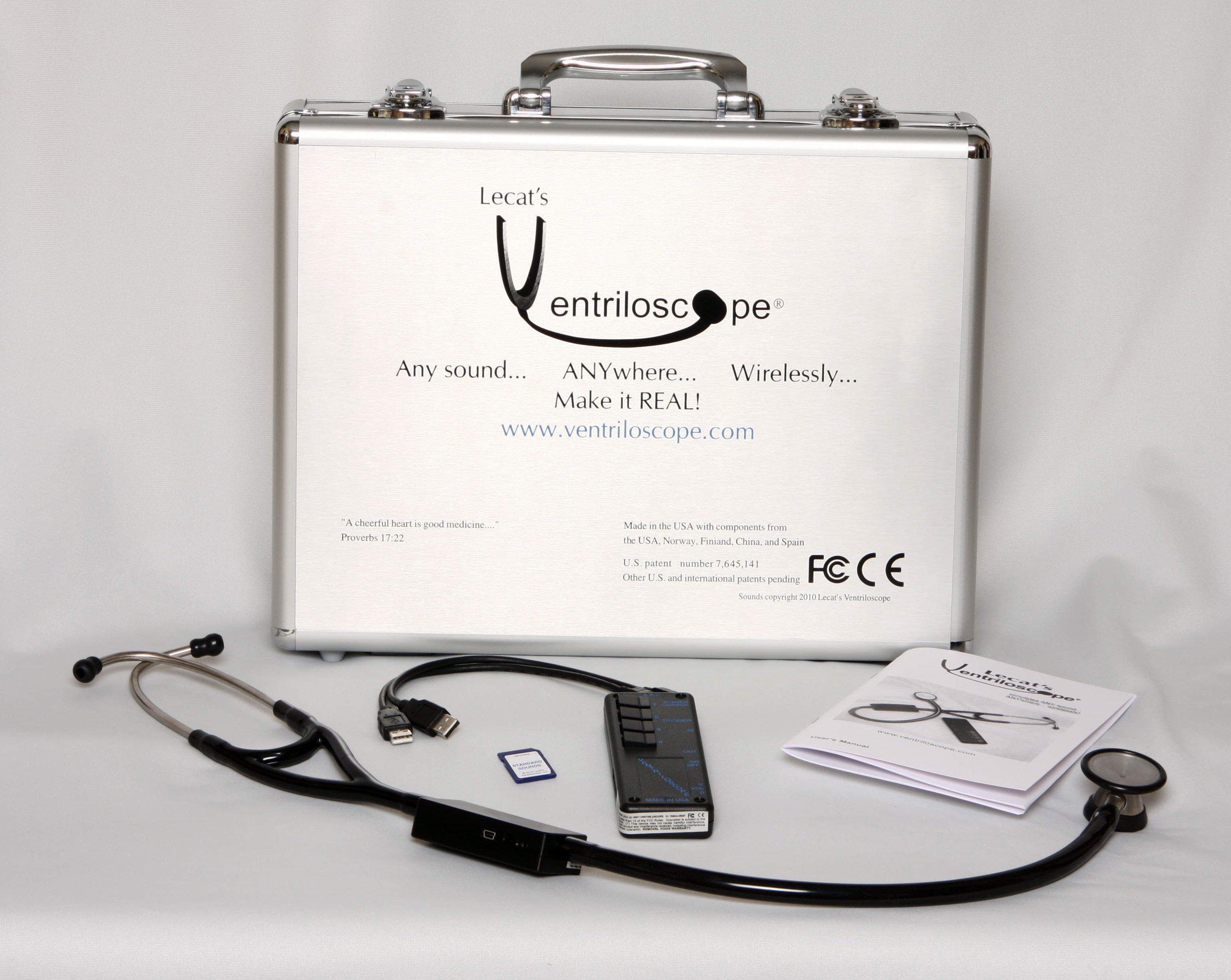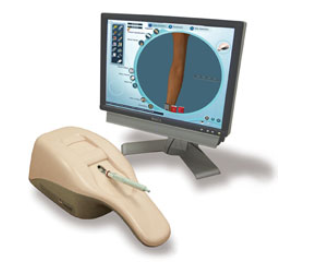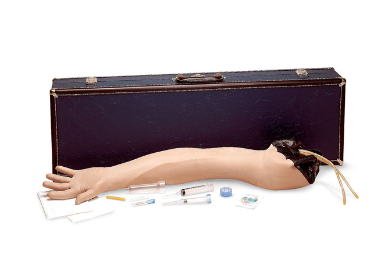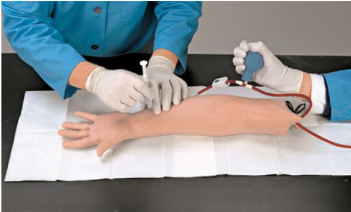Task Trainer
Information below is adapted from manufacturer's product information
Ventriloscope (2)
The Ventriloscope allows the authentic integration of taking a patient history with a realistic exam; the system takes standardized patients and high fidelity simulation programs to the next level by wirelessly transmitting sounds, such as heart, lung, and bowel sounds, into a realistic stethoscope. It simulates any sound, wirelessly, anywhere on the patient or mannequin.
Features:
- Realistic simulation with mannequins or SPs by allowing for any sounds to be placed anywhere, invisibly.
- Learn basic abnormal heart and lung sounds
- Teach blood pressure and other vitals in large classrooms, seminars or small groups
- Place new sounds in old mannequins
- Know that your students can take vitals accurately and recognize 'abnormals'
- Acoustically realistic sound is received through stethoscope tubing - not through a speaker or earphone
- Can play multiple sounds over the same area on a standardized patient or mannequin
- Standardized patient or instructor can start or stop loops of recordings on command
- Uses MP3 files which you can place into transmitter
- Can also transmit sound from any other device, such as a PDA, CD player, etc
Virtual I.V. (1)
High Quality Intravenous Training and Skills Sustainment
The Virtual I.V. is a comprehensive, fully interactive, self-directed learning system for training intravenous catheterization. Powerful 3D graphics provide visual realism, while a state-of-the-art force feedback device accurately simulates the sense of touch for a truly immersive experience.
- The Adult Virtual I.V. Self-Directed Learning System includes 150 distinct case scenarios. Each is customized to one of three areas: in-hospital, pre-hospital and military care providers.
- 42 unique, anatomically accurate, interactive 3-D arm models span human variation in terms of ethnicity, size age and sex, guaranteeing learners access to a diverse group of patients.
- Incorporates 5 distinctive training types: procedure overview, system overview, anatomical viewer, competency training and practice case scenarios.
Effective Simulation Training in a Risk-free Environment
- Virtual I.V. simulation provides standardized educational content, training methodology and performance measurement improving learners' confidence before entering a clinical environment
- Applies to multi-level education; Initial and Continuing Education through to Remediation and Recertification
- A comprehensive portfolio of case scenarios presents students with the clinical information needed to execute each procedure, build decision making skills, challenge their knowledge, and master the procedures required to perform cannulation
- The self-directed learning system records and evaluates students' performance and presents a thorough debriefing following each case. The debriefing gives students positive reinforcement and clear instruction that can be used to improve their abilities and training.
Practice Needle Procedures with Life-like Patient Anatomy in Real World Scenarios
- Force feedback provides realistic feel in terms of skin stretch, palpation, size, and insertion forces. Allows users to perform a two-finger skin stretch technique appropriate to the procedure.
- Supports arterial palpation at both temporal scalp sites and the arm, allowing the pulse to be felt by the user, defining artery location.
- Virtual patients respond with bleeding, bruising, swelling, as well as other patho-physiological reactions.
- Over a dozen pieces of virtual equipment can be used to perform the medical procedure.
Injectable Training Arm
Life/form® Venipuncture and Injection Training Arms (4)
Simple and easy to use, Life/form® Venipuncture and Injection Training Arms are the ideal way to teach venipuncture and injection techniques including:
- Starting I.V.s
- Introducing Over the Needle I.V. catheters.
- This simulator ends your problem of finding willing volunteers
- Helps to avoid patient injury and liability while students are learning new procedures.
Realism begins with fine detail - right down to the fingerprints. But most important is the realistic feeling of puncture through the vinyl skin and latex veins. The skin actually rolls as you palpate the vein and the characteristic "pop" can be felt as the needle penetrates the vein. Veins are accessible at the antecubital fossa, along the forearm, and at the back of the hand, making it possible to practice venipuncture at any of the common sites. Practice of intramuscular injection is equally realistic. A foam pad simulates muscle tissue, and the boundaries are identified by natural bonelike landmarks.
Life/form® Arterial Puncture Arm (4)
Easy to setup and use, this valuable training aid is ideal for practice and demonstration in drawing arterial blood samples for monitoring blood gases.
With this unique arm, students can actually identify puncture locations through palpation of the pulse at either the radial or brachial sites. Realistic arterial pressure produces a realistic backflow of blood in the syringe, confirming proper needle location in the artery.



